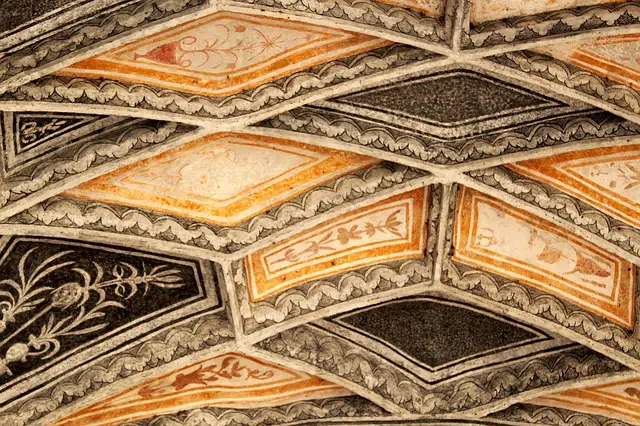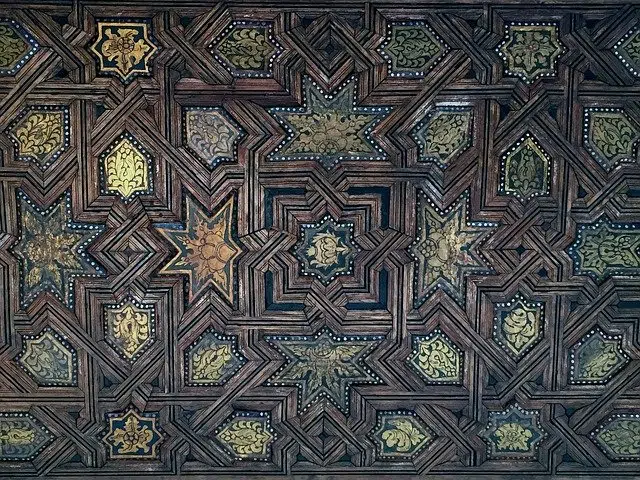
An example of sgraffito on a fresco
Sgraffito is the act and result of sgraffito . This action (sgraffito), meanwhile, refers to drawing with a graph , making pieces of the surface jump to reveal the color of another layer.
An ornamentation technique
The technique that consists of developing this type of ornamentation is called sgraffito. To sgraffito, the person uses the graphio , which is a special instrument to carry out these tasks.
Sgraffito requires working on a stewed surface (already prepared or laid out). It usually develops on ceilings and internal or external walls of a construction .
What sgraffito does is create figures or shapes by removing sections of the surface layer . The artist, with the graphio, scratches the surface and allows a different color to be visible, giving rise to the drawings .
Templates that present geometric figures are often used. Thus, sgraffito consists of the repetition of a series of patterns for decoration .
Origin of sgraffito
It is important to note that architectural sgraffito emerged several millennia before Christ . Therefore, it is a very old decoration technique. The Egyptians, the Arabs, the Romans, the Assyrians and the Greeks, for example, applied it to architecture , to a greater or lesser extent. Its perfection, however, took place at the hands of the ancient Romans.
Starting from an architecture that consisted of the use of mortar to cover walls and ceilings with decorations, the Romans improved the mortar formula to make it more resistant against the deterioration of inclement weather, but also to open doors to buildings. more beautiful and majestic.
Later, in the Renaissance , the technique was masterfully applied to the vaults and facades of churches, palaces and other buildings. In this case, the artists of Italy had the intention of recovering classical and ancient techniques to be able to apply them to their creations, and that is how they began to use marble and lime powders in their stuccos.
The relevance of sgraffito grew considerably thanks to the renown acquired by artists of the stature of Michelangelo , Rafael Sanzio and Leonardo da Vinci . The monuments and palaces in which this technique can be seen show incomparable nobility.
In Spain
We can see in the Alhambra , a famous Granada complex made up of palaces and gardens, one of the most prominent uses of sgraffito. In this architectural monument we find geometric motifs captured in series on the mosaics and friezes that fuse symmetry with architecture in an artistic way.

In the Alhambra, sgraffito rose to unattainable levels
This peculiar union between disciplines sometimes considered distant elevates the visual impact of the Alhambra and collaborates with its transcendence over time . In Catalonia, on the other hand, sgraffito is related to the bourgeoisie, for the decoration of homes so that the standard of living of the population was evident.
We find it above all in Barcelona, where it had special importance since the end of the 18th century. There we can see a wide variety of sgraffito models with their own character , which emerged as a result of an evolution of pre-existing styles carried out by local artists.
Beyond architecture
In any case, sgraffito transcends architecture. In pottery , the engraving known as sgraffito - made with a punch - has been used since the Neolithic . In this case, sgraffito consists of making incisions and scratches in the tender dough or in the already cooked object. In the Middle Ages , on the other hand, sgraffito was applied to gold illustrations made on manuscripts.
